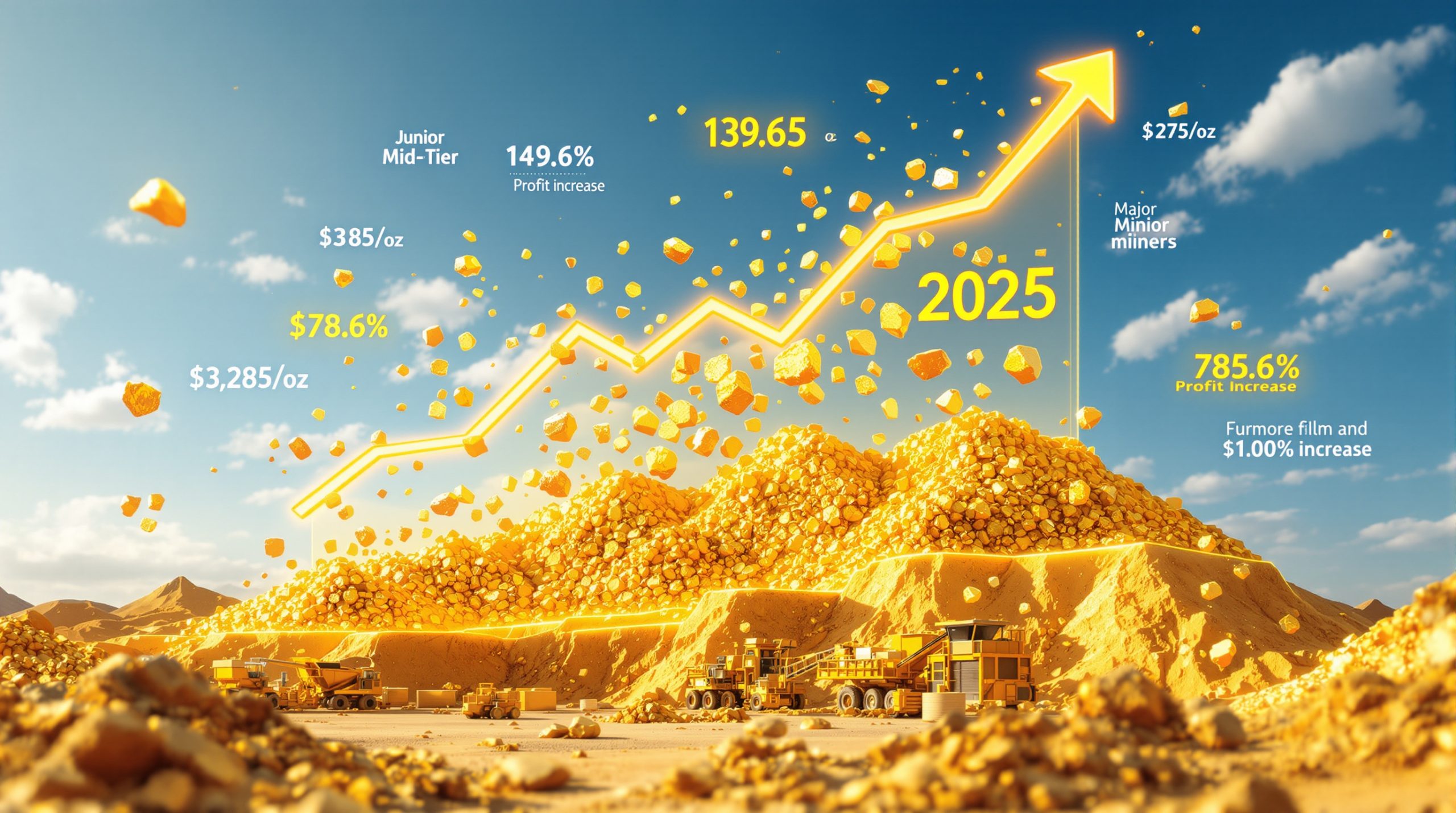Federal Reserve Interest Rate Cuts: Economic Drivers and Market Implications
The possibility of Federal Reserve interest rate cuts has been a central focus for investors and economists throughout 2024. With inflation stabilizing and mixed signals from employment data, market participants are closely monitoring the Fed's next moves. This comprehensive analysis explores the factors driving rate cut expectations, potential impacts on consumers and markets, and what might trigger significant market movements in the coming months.
What's Driving Federal Reserve Interest Rate Cut Expectations?
Current Economic Indicators and Their Impact
Inflation has shown signs of moderation in recent months, hovering around the 3% range according to Consumer Price Index data. While this represents progress from the 9.1% peak reached in June 2022, it remains above the Federal Reserve's 2% target. This inflation stabilization has become a key factor in rate cut deliberations.
The labor market presents a more complex picture. Despite concerns about cooling employment, monthly job additions have remained relatively resilient. However, the unemployment rate has gradually ticked up, creating what economists call "conflicting signals" – where inflation appears to be stabilizing while labor market pressures show early warning signs of potential weakness.
These mixed signals have created a challenging environment for monetary policy decision-making, with different interpretations about whether the data justifies maintaining higher rates or beginning an easing cycle.
The Divided Federal Reserve Board
The Federal Open Market Committee (FOMC) has shown increasing signs of internal division regarding the appropriate path forward. Recent FOMC meeting minutes revealed more disagreement than previously understood, with some members advocating for immediate rate cuts while others prefer a more cautious approach.
Several committee members have expressed concerns about cutting rates prematurely, particularly if inflation remains above target. Others worry about waiting too long and potentially allowing labor market deterioration to accelerate unnecessarily.
Political considerations add another layer of complexity, with some suggesting that election-year pressures could influence timing decisions. Additionally, ongoing confirmation processes for new board members could potentially shift the balance of hawkish versus dovish voices within the committee.
How Likely Is a September Rate Cut?
Market Expectations vs. Reality
Market expectations for a September rate cut have fluctuated significantly. Earlier in the year, market pricing indicated nearly 100% certainty of a September reduction. However, as economic data has evolved and Fed communications have emphasized data dependence, those expectations have moderated.
Current market pricing suggests approximately a 70% probability of a rate cut in September, with the remaining 30% reflecting expectations that the Fed might maintain current rates. This shift demonstrates how sensitive market expectations are to economic releases and Fed communications.
The annual Jackson Hole Economic Symposium, where central bankers gather to discuss monetary policy challenges, could significantly influence these expectations depending on the tone and content of speeches delivered by Fed officials.
Factors That Could Delay Rate Cuts
Several factors could potentially delay the Federal Reserve's rate cutting cycle:
- Stubborn inflation metrics: If inflation measures show resistance to further declines or unexpected increases in coming months
- Resilient consumer spending: Continued strong retail sales and consumer expenditures might suggest the economy doesn't require monetary stimulus
- Labor market strength: If unemployment remains low and wage growth stays elevated
- Financial stability concerns: Worries that rate cuts could reignite asset bubbles or excessive risk-taking
- Global monetary policy divergence: Actions by other major central banks could influence the Fed's decision-making process
The Fed must also consider whether a single 25 basis point reduction would provide meaningful economic benefit versus the risk of appearing to respond to market pressures rather than economic fundamentals.
What Would a Federal Reserve Rate Cut Mean for Consumers?
Realistic Expectations for Mortgage Rates
Consumers should moderate their expectations about immediate relief from a single Federal Reserve rate cut. Historical evidence suggests that mortgage rates don't necessarily move in perfect tandem with Fed policy adjustments for several reasons:
- Mortgage rates correlate more closely with 10-year Treasury yields than the federal funds rate
- Lenders typically price in anticipated rate movements before they occur
- Market factors beyond Fed policy influence mortgage lending rates
- The spread between the federal funds rate and mortgage rates can vary based on risk assessments
A 25 basis point reduction in the federal funds rate would likely have minimal immediate impact on mortgage affordability. Homebuyers waiting for significantly lower borrowing costs might need to recalibrate their expectations.
Important note: The relationship between Federal Reserve actions and consumer lending rates involves complex market mechanisms. A single rate cut typically doesn't translate directly to equivalent reductions in consumer borrowing costs.
Investment Market Implications
Investment markets have already priced in expectations for rate cuts, which partially explains the strong performance of major indices like the S&P 500 despite economic uncertainties. This creates potential for market volatility if the Fed's actions diverge from these expectations.
Gold and precious metals markets have positioned favorably in anticipation of rate cuts, with gold prices analysis showing record price levels. Historically, precious metals often perform well in rate-cutting environments due to:
- Lower opportunity cost of holding non-yielding assets
- Potential currency debasement concerns
- Safe-haven demand during economic transitions
- Inflation hedging properties
Mining companies have benefited from elevated metal prices while managing to control production costs, creating favorable operating margins. This sector could see continued outperformance if rate cuts materialize as expected.
How Are Markets Positioning Ahead of Potential Rate Cuts?
Gold and Precious Metals Outlook
Gold prices have reached unprecedented levels, trading around $3,300 per ounce after breaking through previous resistance levels. Technical analysts note consolidation in a range between $3,280-$3,400, suggesting potential for further upside if monetary policy eases.
Silver has outperformed gold in percentage terms, reflecting its dual role as both a precious metal and industrial commodity. The gold-to-silver ratio (the number of silver ounces needed to purchase one ounce of gold) has moved toward more historical norms after reaching extreme levels in recent years.
Precious metals investors are monitoring several key indicators:
- Real interest rates (nominal rates minus inflation)
- Dollar strength/weakness
- Central bank purchasing patterns
- Technical price levels and momentum
- ETF investment flows
These markets appear to be pricing in multiple rate cuts rather than just a single reduction, creating potential volatility depending on the Fed's communication about future policy direction.
Mining Sector Performance
Mining companies have experienced substantial share price appreciation in 2024, with major gold producers significantly outperforming broader market indices. This performance reflects both higher commodity prices and improved operational efficiency following years of cost-cutting initiatives.
Major producers have reported strong free cash flow generation, allowing for dividend increases and debt reduction. Production costs have stabilized while metal prices remain elevated, creating an optimal operating environment.
The sector shows evidence of capital discipline following previous cycles where companies prioritized production growth over profitability. Current mining industry trends tend to focus on:
- Maintaining sustainable production levels
- Extending mine life through targeted exploration
- Reducing debt and strengthening balance sheets
- Returning capital to shareholders through dividends
- Selective acquisition of high-quality assets
This disciplined approach has contributed to improved investor sentiment toward the sector after years of underperformance.
What Are the Geopolitical Factors Influencing Rate Decisions?
Russia-Ukraine Developments
The ongoing conflict between Russia and Ukraine continues to influence global markets and monetary policy considerations. Recent developments regarding potential peace negotiations have introduced additional market uncertainty.
Reports of potential Chinese involvement in security arrangements represent a significant shift in diplomatic positioning. These geopolitical developments affect Fed policy considerations through:
- Potential impacts on global supply chains
- Energy price implications
- Market volatility during periods of heightened tension
- Safe-haven demand for certain assets
- Trade flow disruptions
Central banks must consider these external factors when determining appropriate monetary policy, as they can influence inflation, growth, and financial stability.
US-China Trade Relations
Tensions between the United States and China regarding critical mineral supply chains have intensified in recent months. The US-China trade impact is particularly relevant to markets focused on industrial metals and materials essential for energy transition technologies.
Recent meetings between mining executives and government officials highlight growing concerns about supply security for materials like lithium, copper, and rare earth elements. Policy actions including tariffs and export restrictions have created price volatility in these markets.
These trade dynamics create complex considerations for monetary policymakers who must evaluate how supply chain disruptions might affect:
- Price stability across various economic sectors
- Manufacturing capacity and investment
- Employment in trade-sensitive industries
- Overall economic growth trajectories
What Could Trigger the Next Major Market Move?
Potential Catalysts for Gold and Silver
Several potential catalysts could drive the next significant move in precious metals markets:
- Federal Reserve communications: Changes in forward guidance language or dot plot projections
- Inflation data surprises: Unexpected readings in CPI, PCE, or other inflation metrics
- Labor market deterioration: Accelerating job losses or unemployment increases
- Technical breakouts: Movement beyond current consolidation patterns
- Central bank purchasing: Continuation or acceleration of sovereign gold acquisition
- ETF investment flows: Changes in institutional positioning in precious metals
- Currency market volatility: Significant dollar weakening or strengthening
Silver's industrial applications in renewable energy, electronics, and medical sectors create additional demand factors beyond its monetary characteristics. This dual nature can lead to price performance divergence from gold during certain economic scenarios.
Recession Concerns and Safe Haven Demand
Despite years of warnings, recession concerns have recently intensified among certain economic forecasters. Leading indicators including yield curve dynamics, manufacturing surveys, and consumer sentiment measures have shown some deterioration.
Industrial metals typically demonstrate greater vulnerability to economic slowdowns compared to precious metals with monetary attributes. This creates potential for divergent performance across different commodity categories if recession concerns materialize.
Financial professionals increasingly discuss portfolio positioning for defensive scenarios, with traditional gold safe haven insights receiving greater attention. Central bank gold purchasing trends have remained supportive, with sovereign buyers continuing to accumulate physical metal despite price appreciation.
FAQ About Federal Reserve Interest Rate Cuts
When is the next Federal Reserve meeting scheduled?
The Federal Open Market Committee (FOMC) meets approximately every six weeks. The next meeting is scheduled for September 17-18, 2024, when the committee will decide whether to implement a rate cut. The meeting will conclude with a policy statement, updated economic projections, and a press conference by the Federal Reserve Chair.
How many rate cuts are expected in 2024?
Market expectations have fluctuated considerably throughout 2024. Current projections suggest 2-3 potential cuts before year-end, representing a significant reduction from earlier expectations of 4-6 cuts. These expectations continue to evolve based on incoming economic data and Federal Reserve communications.
How do Federal Reserve rate cuts affect savings accounts?
Rate cuts typically lead to lower interest rates on savings accounts, money market accounts, and certificates of deposit. Financial institutions generally reduce their deposit rates following Fed policy easing, though not always by the same magnitude or timing as the official rate change. This environment tends to disadvantage savers while benefiting borrowers.
What happens to the stock market when the Fed cuts rates?
Stock market reactions to rate cuts depend heavily on context and market expectations. Generally, markets respond positively to rate cuts viewed as preventative or insurance against economic weakness. However, if cuts are perceived as reactive to serious economic deterioration, market reactions may be negative. Additionally, if markets have already priced in expected cuts, the actual implementation might produce minimal reaction.
Will a Fed rate cut make houses more affordable?
A single 25 basis point reduction in the federal funds rate would likely have minimal immediate impact on mortgage rates or housing affordability. Mortgage rates correlate more closely with longer-term bond yields than with the Fed's short-term rate. Additionally, housing affordability depends on multiple factors beyond interest rates, including home prices, inventory levels, wage growth, and lending standards.
Further Reading on Federal Reserve Policy and Market Implications
For readers interested in exploring these topics in greater depth, numerous educational resources examine the relationship between monetary policy and financial markets. The Fed's September dilemma provides additional perspective on current policy challenges. Economic research departments at major financial institutions regularly publish analysis of Federal Reserve policy implications. Additionally, the Fed rate cuts expectations from major financial institutions offer insights into various potential scenarios.
Understanding the complex interplay between interest rates, inflation, employment, and market dynamics requires examining multiple perspectives and data sources. As the Federal Reserve navigates the current economic landscape, market participants should prepare for various potential outcomes rather than anchoring expectations to a single scenario, especially considering ongoing US economic pressures that could influence future policy decisions.
Ready to Invest in the Next Major Mineral Discovery?
Discovery Alert's proprietary Discovery IQ model delivers instant notifications on significant ASX mineral discoveries, transforming complex data into actionable insights for investors. Explore why major mineral discoveries can lead to exceptional market returns by visiting Discovery Alert's dedicated discoveries page and begin your 30-day free trial today.




